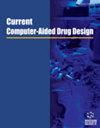Computer-Aided Drug Discovery Approaches in the Identification of Anticancer Drugs from Natural Products: A Review
IF 1.6
4区 医学
Q4 CHEMISTRY, MEDICINAL
引用次数: 0
Abstract
: Natural plant sources are essential in the development of several anticancer drugs, such as vincristine, vinblastine, vinorelbine, docetaxel, paclitaxel, camptothecin, etoposide, and teniposide. However, various chemotherapies fail due to adverse reactions, drug resistance, and target specificity. Researchers are now focusing on developing drugs that use natural compounds to overcome these issues. These drugs can affect multiple targets, have reduced adverse effects, and are effective against several cancer types. Developing a new drug is a highly complex, expensive, and time-consuming process. Traditional drug discovery methods take up to 15 years for a new medicine to enter the market and cost more than one billion USD. However, recent Computer Aided Drug Discovery (CADD) advancements have changed this situation. This paper aims to comprehensively describe the different CADD approaches in identifying anticancer drugs from natural products. Data from various sources, including Science Direct, Elsevier, NCBI, and Web of Science, are used in this review. In-silico techniques and optimization algorithms can provide versatile solutions in drug discovery ventures. The structure-based drug design technique is widely used to understand chemical constituents' molecular-level interactions and identify hit leads. This review will discuss the concept of CADD, in-silico tools, virtual screening in drug discovery, and the concept of natural products as anticancer therapies. Representative examples of molecules identified will also be provided.从天然产品中鉴定抗癌药物的计算机辅助药物发现方法:综述
:天然植物资源对开发多种抗癌药物至关重要,如长春新碱、长春碱、长春瑞滨、多西他赛、紫杉醇、喜树碱、依托泊苷和替尼泊苷。然而,由于不良反应、耐药性和靶向特异性等原因,各种化疗均告失败。目前,研究人员正致力于开发利用天然化合物来克服这些问题的药物。这些药物可以影响多个靶点,减少不良反应,并对多种癌症类型有效。研发新药是一个非常复杂、昂贵和耗时的过程。传统的药物发现方法需要长达 15 年的时间才能让一种新药进入市场,成本超过 10 亿美元。然而,近年来计算机辅助药物发现(CADD)的发展改变了这一局面。本文旨在全面介绍从天然产物中发现抗癌药物的不同 CADD 方法。本综述使用了来自不同来源的数据,包括 Science Direct、Elsevier、NCBI 和 Web of Science。硅学技术和优化算法可以为药物研发提供多种解决方案。基于结构的药物设计技术被广泛应用于了解化学成分的分子级相互作用和确定新药线索。这篇综述将讨论 CADD 的概念、水下工具、药物发现中的虚拟筛选以及天然产品作为抗癌疗法的概念。此外,还将提供已确定分子的代表性实例。
本文章由计算机程序翻译,如有差异,请以英文原文为准。
求助全文
约1分钟内获得全文
求助全文
来源期刊

Current computer-aided drug design
医学-计算机:跨学科应用
CiteScore
3.70
自引率
5.90%
发文量
46
审稿时长
>12 weeks
期刊介绍:
Aims & Scope
Current Computer-Aided Drug Design aims to publish all the latest developments in drug design based on computational techniques. The field of computer-aided drug design has had extensive impact in the area of drug design.
Current Computer-Aided Drug Design is an essential journal for all medicinal chemists who wish to be kept informed and up-to-date with all the latest and important developments in computer-aided methodologies and their applications in drug discovery. Each issue contains a series of timely, in-depth reviews, original research articles and letter articles written by leaders in the field, covering a range of computational techniques for drug design, screening, ADME studies, theoretical chemistry; computational chemistry; computer and molecular graphics; molecular modeling; protein engineering; drug design; expert systems; general structure-property relationships; molecular dynamics; chemical database development and usage etc., providing excellent rationales for drug development.
 求助内容:
求助内容: 应助结果提醒方式:
应助结果提醒方式:


